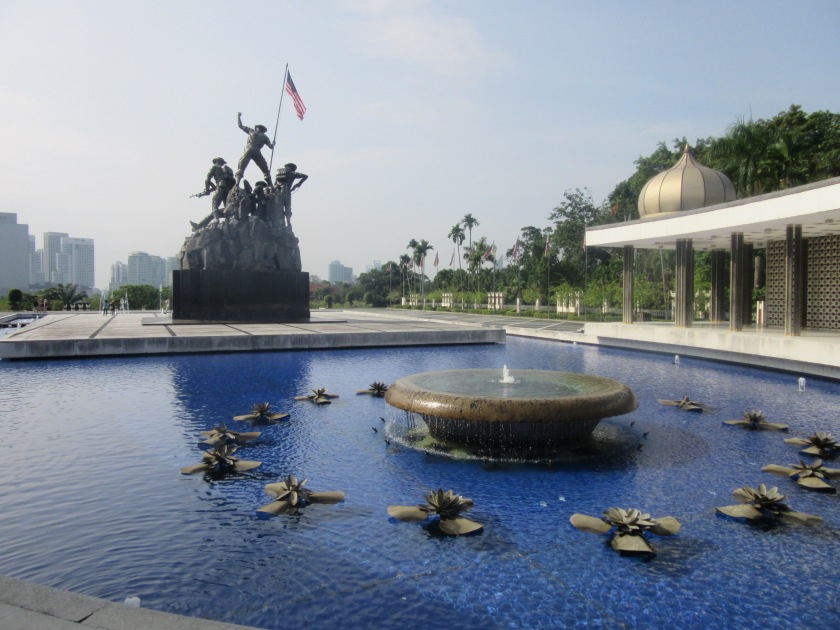January 25, 2019
One day at sea after Phuket and we landed in Malaysia at Port Kelang, the country’s main gateway, located about 40 km southwest of the capital, Kuala Lumpur.
On the morning of January 25, a Friday, we started filing into the coaches at 8:00 a.m. on our way to the capita. Where excursions are concerned, the ship’s passengers are grouped by colours, seven groups in total, with a coach for each group. Because the same people always travel together it’s a good way to get to know the other passengers. It makes it easier to invite yourself to sit someone’s table during mealtimes when you’ve commiserated over the infernal heat and humidity earlier in the day.
Kuala Lumpur, meaning “muddy estuary,” was established in 1857 as a trading post by Chinese tin miners and traders. The tin mining rush of the 1860s and 1870s brought rapid growth and after the British took control in the 1880s and construction boomed it became capital of the federated Malay states, the youngest capital in Southeast Asia.
It’s a neat, pretty city. You have a sense of spaciousness, and order as you move through it.
The majority of the Malay people have inhabited the area of Malaysia and Singapore for more than two thousand years. The other two main ethnic groups are the Chinese and Indians who arrived in 19th and 20th centuries, although some of these residents trace their roots back several centuries.
The drive from Port Kelang to the capital took ninety minutes with the National Monument our first stop. It’s a remarkable tribute to their war heroes. In addition to the monument itself, the complex includes fountains, a pavilion, a war memorial all surrounded by gardens and occupies almost fifty thousand square meters. It commemorates those who died fighting Japanese Occupation during World War II and the “Malayan Emergency” of 1948-1960.

Next we visited the old colonial Railway Station (the city has a new railway station now) with its Islamic-style exterior located not far from the minarets of the city’s grand mosque; We drove by Independence Square, where the Union Flag was lowered in 1957 to create an independent Malaysia, and the heart of the city’s colonial district where noteworthy structures, such as the Royal Sengalor Club, a private club built-in mock-Tudor style, still stand.

The Petronas Towers were eye-popping: two parallel 452-meter towers resembling a pair minarets. 
The Petronas Towers in Kuala Lumpur rise 452 meters
But my favourite view was the clock tower on Merdeka Square.

Then it was back on the bus and the one-and-a-half hour drive back to port.
Elvira! Glad you liked KL, brings back memories. You’ve just missed the worst 10 weather days ever. Dogs survived but the park is so empty, nobody to play with. xcy
LikeLike
In Mauritius today. 35 degrees. Not so pleasant either, my sweet. But I don’t regret missing the avalanche of snow either….
LikeLike